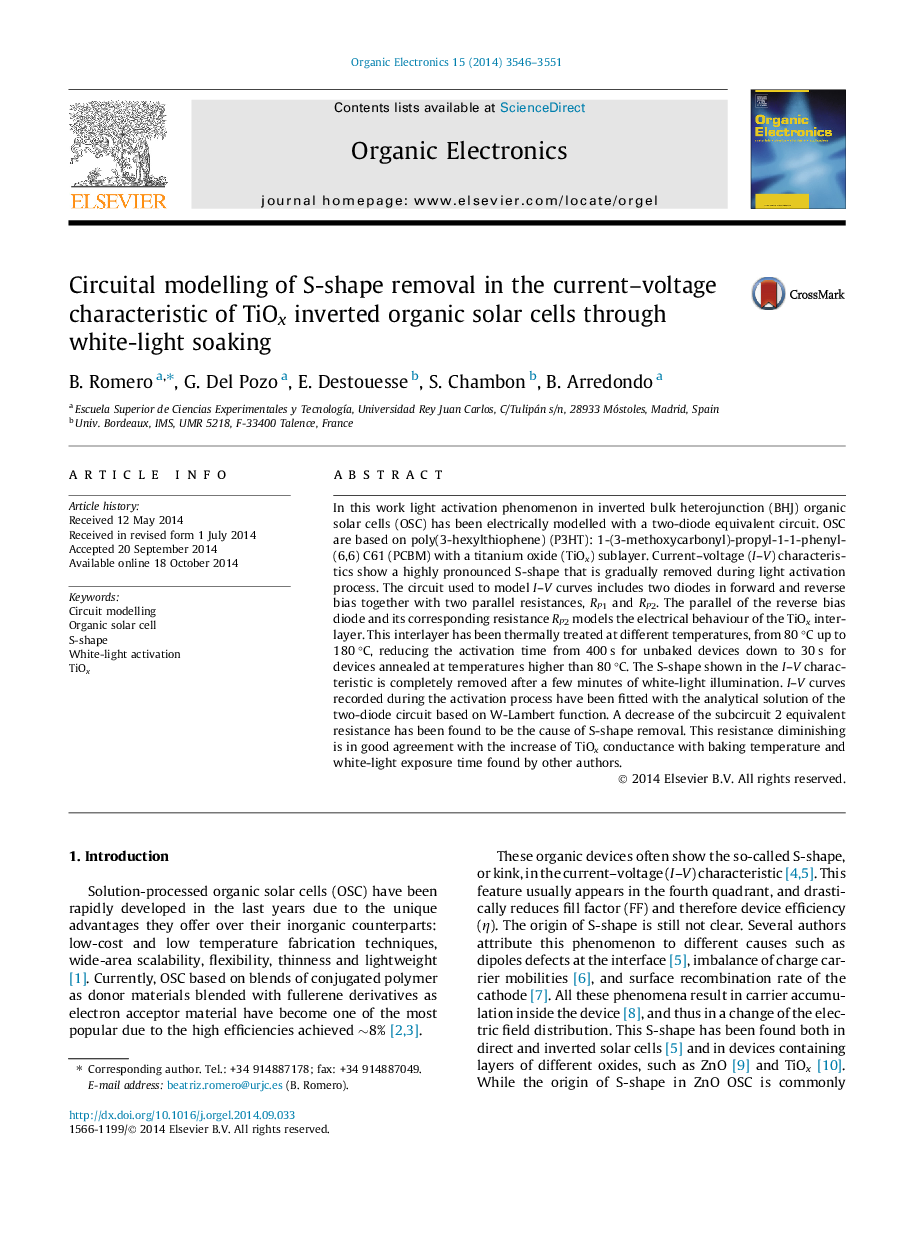| Article ID | Journal | Published Year | Pages | File Type |
|---|---|---|---|---|
| 10565817 | Organic Electronics | 2014 | 6 Pages |
Abstract
In this work light activation phenomenon in inverted bulk heterojunction (BHJ) organic solar cells (OSC) has been electrically modelled with a two-diode equivalent circuit. OSC are based on poly(3-hexylthiophene) (P3HT): 1-(3-methoxycarbonyl)-propyl-1-1-phenyl-(6,6) C61 (PCBM) with a titanium oxide (TiOx) sublayer. Current-voltage (I-V) characteristics show a highly pronounced S-shape that is gradually removed during light activation process. The circuit used to model I-V curves includes two diodes in forward and reverse bias together with two parallel resistances, RP1 and RP2. The parallel of the reverse bias diode and its corresponding resistance RP2 models the electrical behaviour of the TiOx interlayer. This interlayer has been thermally treated at different temperatures, from 80 °C up to 180 °C, reducing the activation time from 400 s for unbaked devices down to 30 s for devices annealed at temperatures higher than 80 °C. The S-shape shown in the I-V characteristic is completely removed after a few minutes of white-light illumination. I-V curves recorded during the activation process have been fitted with the analytical solution of the two-diode circuit based on W-Lambert function. A decrease of the subcircuit 2 equivalent resistance has been found to be the cause of S-shape removal. This resistance diminishing is in good agreement with the increase of TiOx conductance with baking temperature and white-light exposure time found by other authors.84
Related Topics
Physical Sciences and Engineering
Chemistry
Chemistry (General)
Authors
B. Romero, G. Del Pozo, E. Destouesse, S. Chambon, B. Arredondo,
